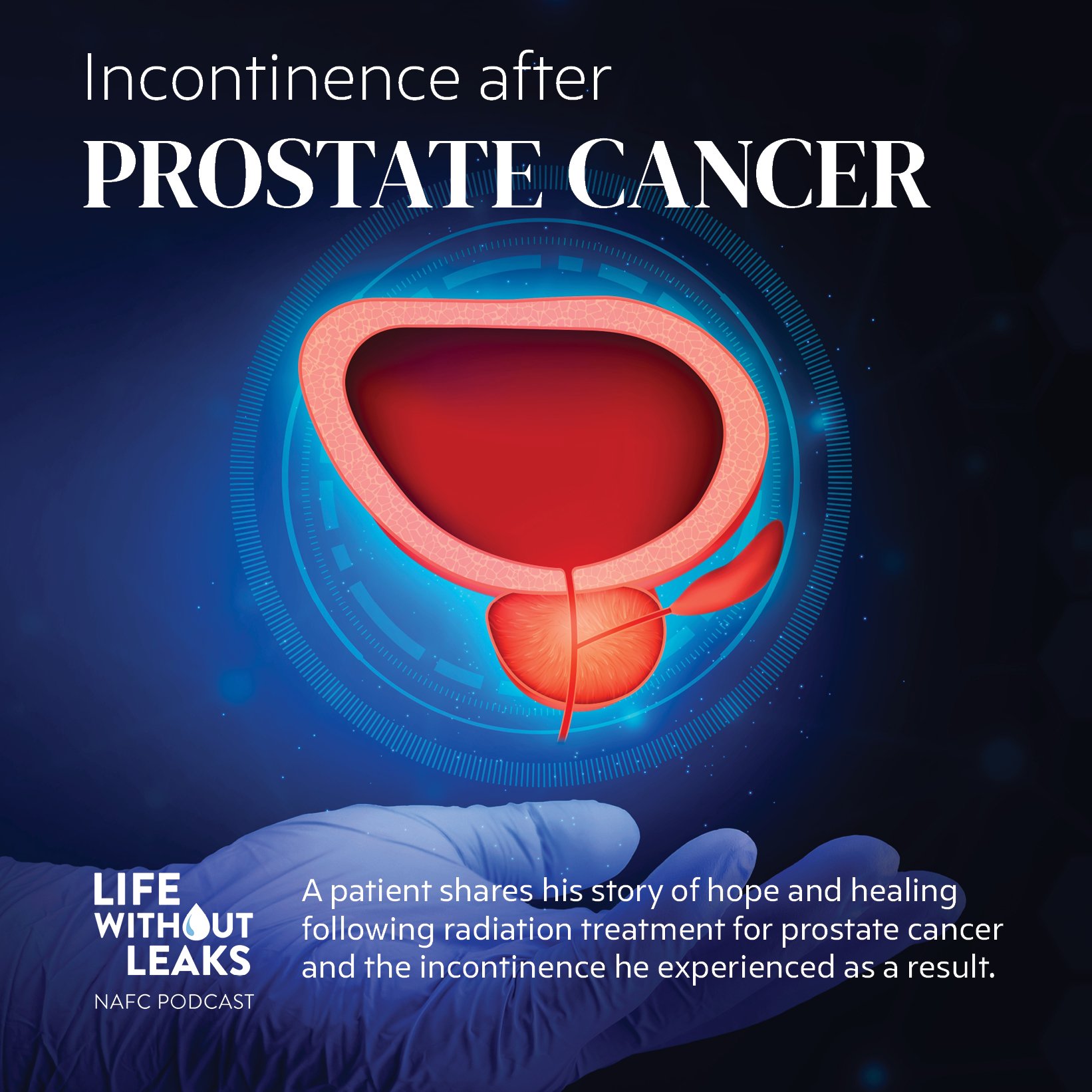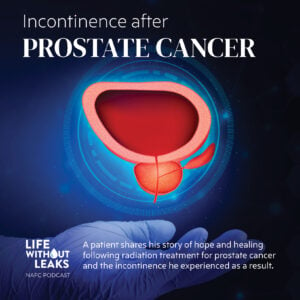October is National Physical Therapy Month, and in honor of that, we thought we’d share some information on one of our favorite ways to treat bladder leaks: physical therapy! If you’ve never heard of this treatment option, keep reading!
What Is Incontinence?
To start, let’s do a quick review of incontinence. Incontinence is defined as the unintentional leakage of urine. And while that’s a simple enough way to explain it, there are actually different types of incontinence, the two most popular being Stress Urinary Incontinence, and Urge Incontinence. Urge Incontinence is often a result of having an Overactive Bladder.
Stress urinary incontinence (also referred to as SUI) occurs when any stress or impact is placed upon the bladder or pelvic floor, causing urine to leak out. Some common triggers for SUI are things like sneezing, coughing, jumping, or laughing. SUI is generally caused by weakened pelvic floor muscles – when your muscles are weakened, it can make it hard for you to “hold it in” when that extra pressure is placed upon your bladder. Things such as pregnancy and childbirth, chronic coughing, or even being overweight can lead to SUI.
People who have an Overactive Bladder (OAB) often experience a strong and sudden urge to empty their bladder. This may occur frequently throughout the day, even if you just used the bathroom. When these urges occur and you’re unable to make it to the toilet in time, you may experience “Urge Incontinence”. OAB is typically caused by a miscommunication between the brain and the bladder.
While both of these types of incontinence can be frustrating and embarrassing to live with, there are fortunately lots of ways to treat them. One of those treatment options is physical therapy.
What Is Pelvic Floor Physical Therapy?
A pelvic health physical therapist is someone who focuses on the muscles of the pelvic floor and the core. (Learn more about your pelvic floor in our Pelvic Floor Health Center!) Your pelvic floor is an integral set of muscles that support the bladder, uterus, and rectum in women, and the bladder, rectum, and prostate in men. A pelvic health PT may treat many conditions, including endometriosis, pelvic organ prolapse, incontinence, constipation, pelvic pain, or pain with intercourse.
In patients with incontinence, a pelvic floor physical therapist will evaluate your pelvic floor and help you to identify, strengthen and coordinate your pelvic floor muscles so that you’re able to control them better and prevent leaks.
Although physical therapy has been around a long time, it’s not something that most American women think of right away when they start to think about treating their incontinence. Unfortunately, many people who talk to their doctor about incontinence may not be told about pelvic floor therapy, as medication and management with absorbent products are two of the most common treatment options. However, pelvic floor therapy is an effective option that shouldn’t be overlooked. In fact, in many countries around the world, it’s actually something that is strongly recommended after childbirth. France, for example, helps to subsidize perennial care after childbirth, and physical therapy is a key component of that care.
Why Should I Consider Physical Therapy For My Incontinence?
There is no one “right way” to treat incontinence. Everyone’s symptoms vary in severity, and different options may work differently depending on the individual person. However, we at NAFC think that physical therapy is a great treatment to try for many reasons:
Strengthening (or relaxing!) your pelvic floor muscles is one of the most natural ways to treat bladder leaks.
Not only are you working with your own muscles to prevent leaks, but by treating your incontinence this way you may be able to avoid taking medications, which can come with unwanted side effects. Physical therapy may also help you avoid surgery, which can result in complications or downtime as you recover.
Pelvic floor physical therapy may be less expensive in the long run.
While regular PT sessions do cost money, your insurance may cover the cost. Additionally, over time, the money you could save on office visits, pads, laundry, medications, and potential surgeries adds up. In fact, recent studies estimate that the average cost to treat incontinence for women in the US is around $900 per year.
Physical Therapy can help prevent your condition from getting worse.
As you age, your pelvic floor naturally gets weaker. Just as with other muscles in the body, you really do have to “use it or lose it”. If you don’t consistently work at keeping your pelvic floor strong and healthy, it may lead to even more leaks over time.
A strong pelvic floor will make you feel empowered and may improve your overall health.
A compromised pelvic floor can cause more than just incontinence. Pelvic organ prolapse, back or hip pain, and constipation are just a few additional side effects of weakened pelvic floor muscles. Learning how to improve your pelvic floor health can improve all of these things. Plus, think of how great you’ll feel once you’ve taken charge, put in the work to strengthen your body, and stopped those leaks for good.
Challenges With Physical Therapy
Despite all of the upsides to physical therapy, there are some challenges associated with treatment.
You have to put in some effort.
Physical therapy isn’t just slapping on a pad or popping a pill – you need to do the exercises prescribed by your PT regularly to see results. And while many of the exercises for pelvic floor physical therapy aren’t incredibly difficult, you’ll need to be consistent about remembering to set aside time to do them.
It may cost some money upfront.
While many insurance plans do cover physical therapy sessions, there are also many that don’t. Paying out of pocket for weekly sessions may be costly, but as we mentioned above, in the long run, it may completely eliminate or reduce your bladder leaks and save you thousands over future years that you would have spent on pads, medications, or even surgery.
Getting there may be tough…
There are a lot of pelvic floor specialists out there, but many are located in urban areas. If you live in a more rural setting, you may have some trouble finding one that is convenient for you to visit regularly.
NAFC can help!
If you face any of the challenges above, we can help. NAFC’s Pelvic Floor Health Center has a wealth of information about the pelvic floor, how it functions, and what you can do to optimize it to prevent leaks.
We’ve also developed a six-week guide to follow if you’re new to PT, or just want to see what you can expect from treatment. This is a great place to start, especially if you’re concerned about the cost of visiting a PT in person, or are unable to find a PT close to you.
Before you continue on the path of pads and medications, give PT a try. If anything, you will develop a better understanding of your body and how your muscles work, and a strong awareness of the role that your pelvic floor plays in preventing bladder leaks, both of which can only help you as you move forward!







One Response
PELVIC FLOOR PHYSICAL THERAPY is an excellent for any age group. However precautions to be adhered.You want to fix or crush Kegels to the point of feeling Kegels working. Nonetheless, be mindful so as not to overwhelm or crush the muscles of your inward thighs, back, bum, or stomach. Crushing these muscles implies you’re not doing the activity accurately.
Additionally, you shouldn’t crush so hard that you pause your breathing. Keep on breathing, typically through Kegels. It might assist with counting without holding back to keep up with your typical breathing example. Please find my thoughts about kegels.